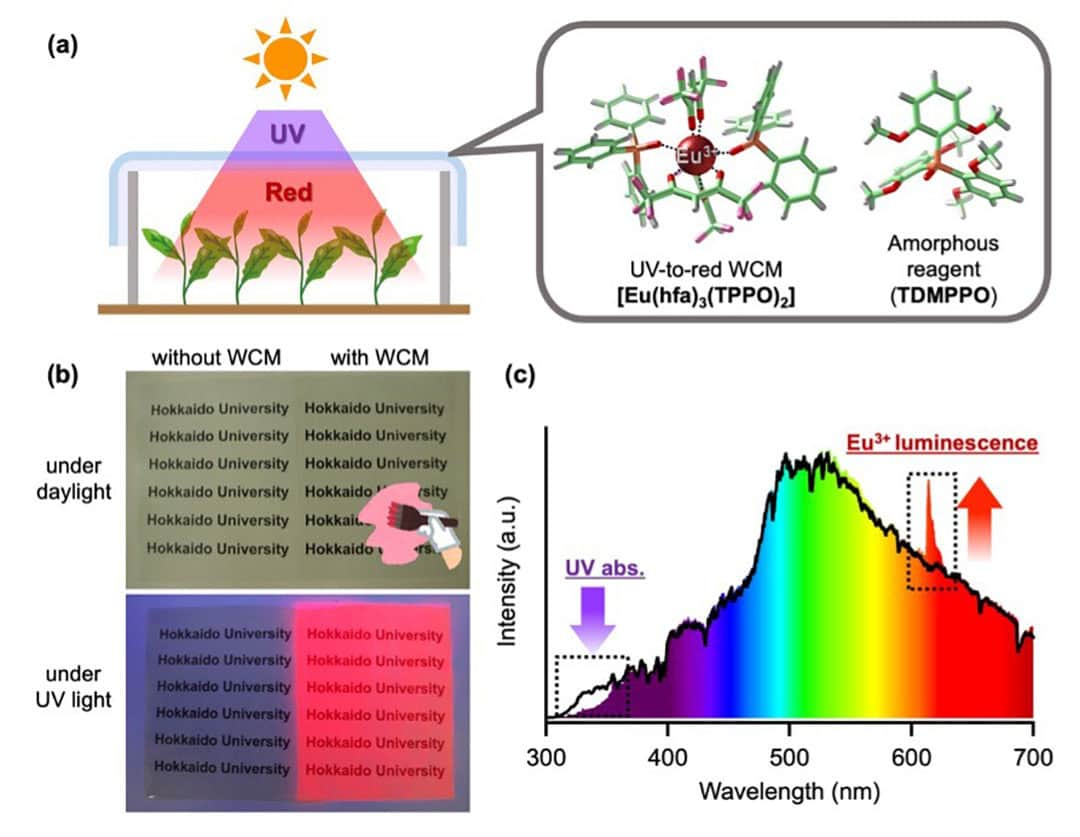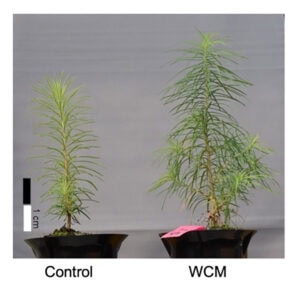UV-to-red light converting films accelerate plant growth, study shows

A europium-based thin-film coating that converts the sun’s UV light into red light can accelerate plant growth. The technology could help farmers in colder climates grow crops faster.
An interdisciplinary team from Hokkaido University’s Engineering and Agriculture departments and the Institute for Chemical Reaction Design and Discovery (WPI-ICReDD) has developed a europium-based thin-film coating that can accelerate plant growth. According to the scientists this technology can improve plant production speed and has the potential to help address global food supply issues.
Convert UV light into red light
Plants convert visible light to energy via photosynthesis. In addition to visible light, sunlight also contains ultraviolet (UV) light. The researchers developed a wavelength converting material (WCM) based on a europium complex that can convert the UV light into red light. The thin-film coating they made can be applied to commercially available plastic sheets.
Text continues below image

Accelerate plant growth in winter
The film was then tested by comparing plant growth using sheets with and without the WCM coating. Trials were performed for both Swiss chard, a vegetal plant, and Japanese larch trees. In summer, when days are long and sun irradiation is strong, no significant difference was observed for Swiss chard when using the WCM films.
In winter, however, Swiss chard plants grown using the WCM films showed 1.2 times greater plant height and 1.4 times greater biomass after 63 days. Researchers attributed this accelerated growth to the increased supply of red light provided by the WCM films.
Also read: Better photosynthesis increases yields in food crops
Faster growing seedlings

Trials involving Japanese larch trees also showed accelerated growth. Seedlings showed a higher relative growth rate in the initial 4 months of growth, resulting in a stem diameter 1.2-fold larger and total biomass 1.4-fold larger than trees grown without the WCM coating. Use of WCM films could shorten the growth period of seedlings from two years to one year, resulting in more cost-efficient plant production.
The researchers say this technology also has the potential to help with food security issues in colder climates and is beneficial because it does not require any electricity to operate. They see the customizability of the technology as especially promising. “This opens a large avenue of future development for next generation agricultural and forestry engineering,” said lead author Sunao Shoji.



